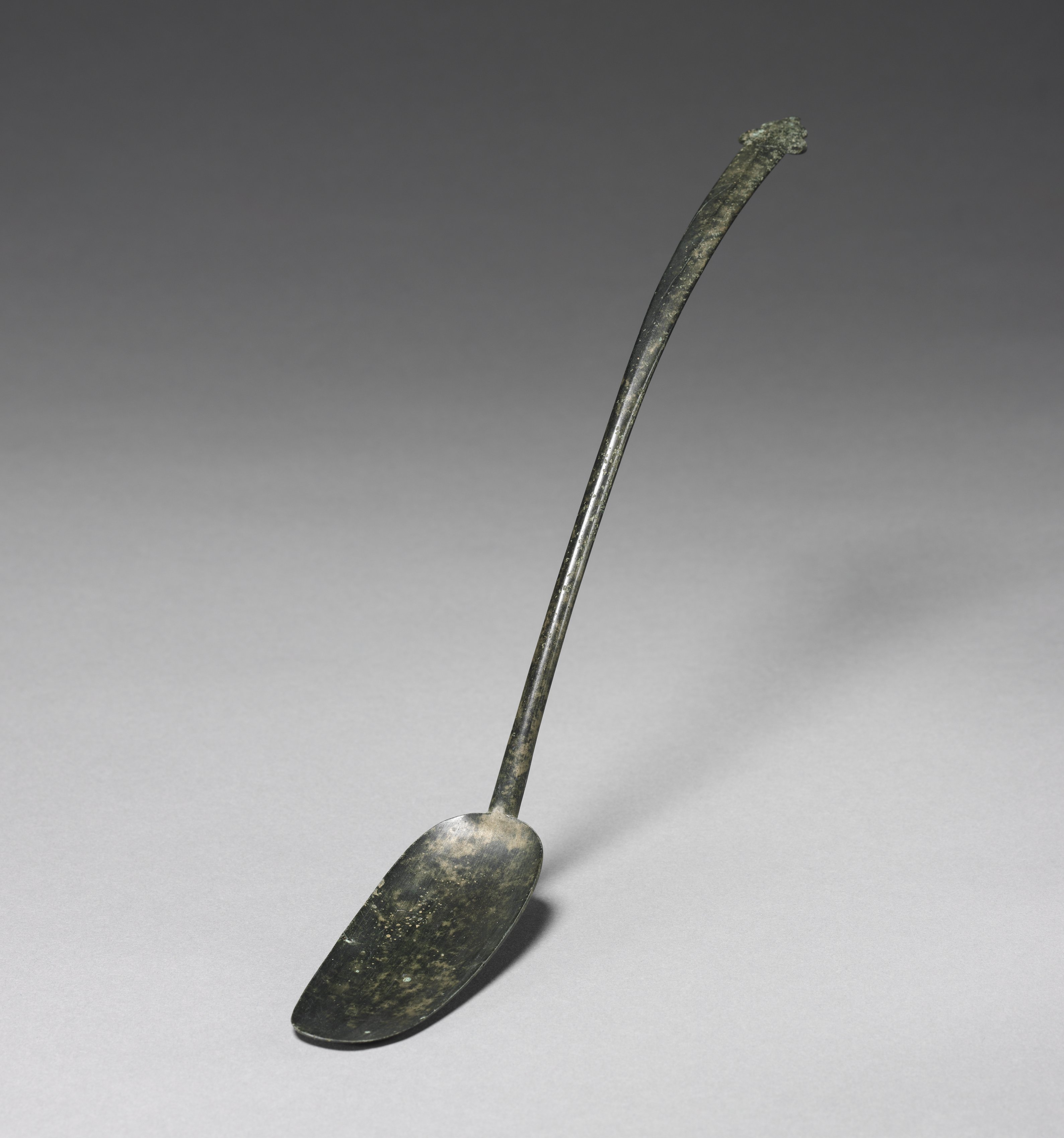The Cleveland Museum of Art
Collection Online as of April 19, 2024

Spoon
918–1392
Location: not on view
Did You Know?
Scholars have proposed that toward the end of the 14th century, Koreans enjoyed meat-based soups more than any other dishes, explaining why spoons became common household items as well as burial goods.Description
Celadons, spoons, seals, and bronze mirrors were the most common burial objects in tombs during the Goryeo period (918–1392). Furnishing tombs with an elaborate assemblage of objects was believed to honor and comfort the newly dead. Generally, Goryeo tombs were left untouched until the late 19th century. During the colonial period (1910–45), however, Japanese archaeologists hastily excavated the tombs located in Kaeseong, the former capital of the Goryeo period. Scholars recently have proposed that toward the end of the 14th century, Koreans enjoyed meat-based soups more than any other dishes, explaining why many more spoons than chopsticks were buried in tombs.- L. W. "Korean Bronze Spoons of the Korai Dynasty." The Bulletin of the Cleveland Museum of Art 4, no. 6 (1917): 99-101. Reproduced: Front Matter; Mentioned: pp. 99-101 www.jstor.orgGoryeo Dynasty: Korea's Age of Enlightenment, 918-1392. San Francisco: Asian Art Museum, 2003.Horlyck, Charlotte. "The Eternal Link: Grave Goods of the Koryŏ Kingdom (918-1392 CE)." Ars Orientalis, no. 44 (2014): 156-79. www.jstor.orgYun, Seong-jae. “The Special Meanings of Spoons and Chopsticks in the Goryeo Dynasty [고려시대 분묘출토 청동수저].” Yeoksa wa silhak (2015): 51-68. www.dbpia.co.krBronze in Life and Art [삶과 예술 속. 청동 靑銅 이야기] National Cheongju Museum (2016).Jeong, Eui-do. Changes of Spoons during the Late Goryeo Period [고려후기 숟가락의 변화].” Hanguk jungse gogohak (2017): 139-157. www.dbpia.co.krGoryeo: The Glory of Korea [대고려, 그 찬란한 도전]. Seoul: National Museum of Korea, 2018.Ch'a, Mi-rae, Kwi-suk An, Cleveland Museum of Art, and 국외소재문화재재단. The Korean Collection of the Cleveland Museum of Art. Edited by An Min-hŭi. First edition, English ed. Overseas Korean Cultural Heritage Series, 16. Seoul, Republic of Korea: Overseas Korean Cultural Heritage Foundation, 2021. Mentioned and reproduced: P. 96Ahn, Kuisook. "The Significance of the Bronze Spoons in the Cleveland Museum of Art." In The Korean Collection of the Cleveland Museum of Art. Ch'a, Mi-rae, Kwi-suk An, Cleveland Museum of Art, 국외소재문화재재단, and An Min-hŭi, ed., 274-289. First edition, English ed. Overseas Korean Cultural Heritage Series, 16. Seoul, Republic of Korea: Overseas Korean Cultural Heritage Foundation, 2021. Mentioned and reproduced: p. 284, fig. 14
- Rodin's Monument to Victor Hugo. Los Angeles County Museum of Art (December 17, 1998-March 14, 1999); Portland Art Museum (April 13-June 11, 1999); Cummer Museum of Art and Gardens, Jacksonville, FL (July 1-September 19, 1999); The Metropolitan Museum of Art (October 7, 1999-January 2, 2000).
- {{cite web|title=Spoon|url=false|author=|year=918–1392|access-date=19 April 2024|publisher=Cleveland Museum of Art}}
Source URL:
https://www.clevelandart.org/art/1917.338